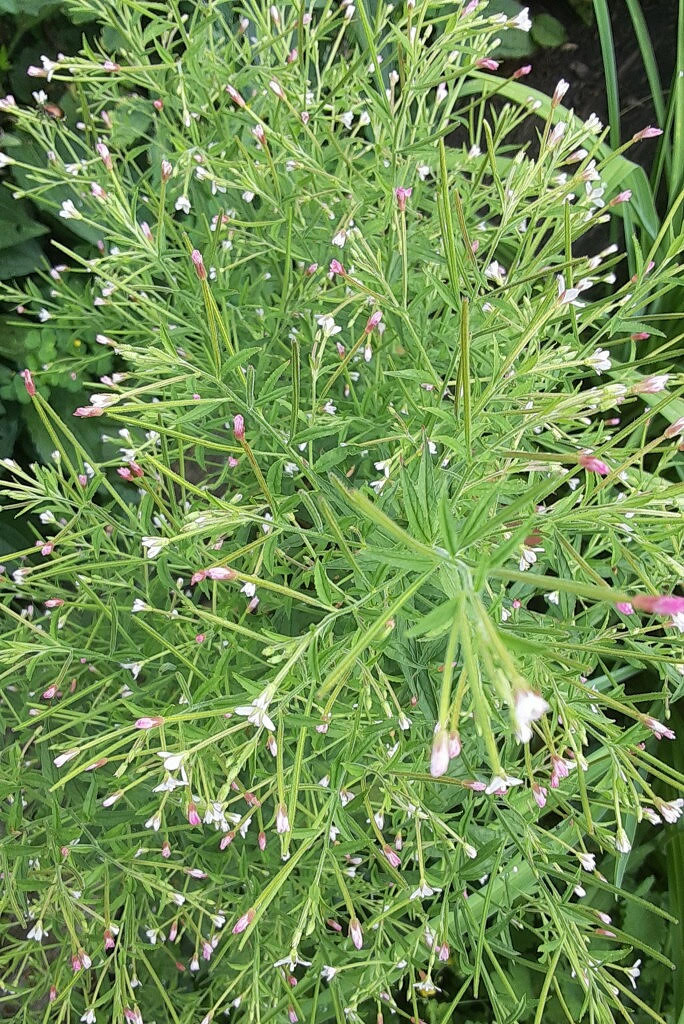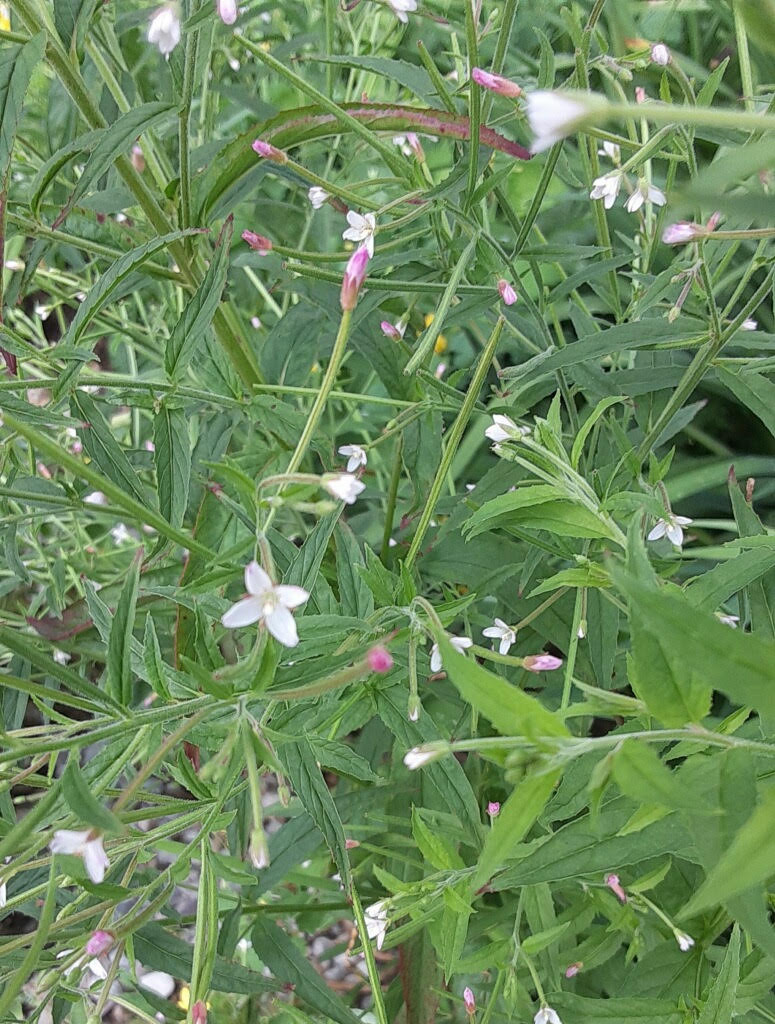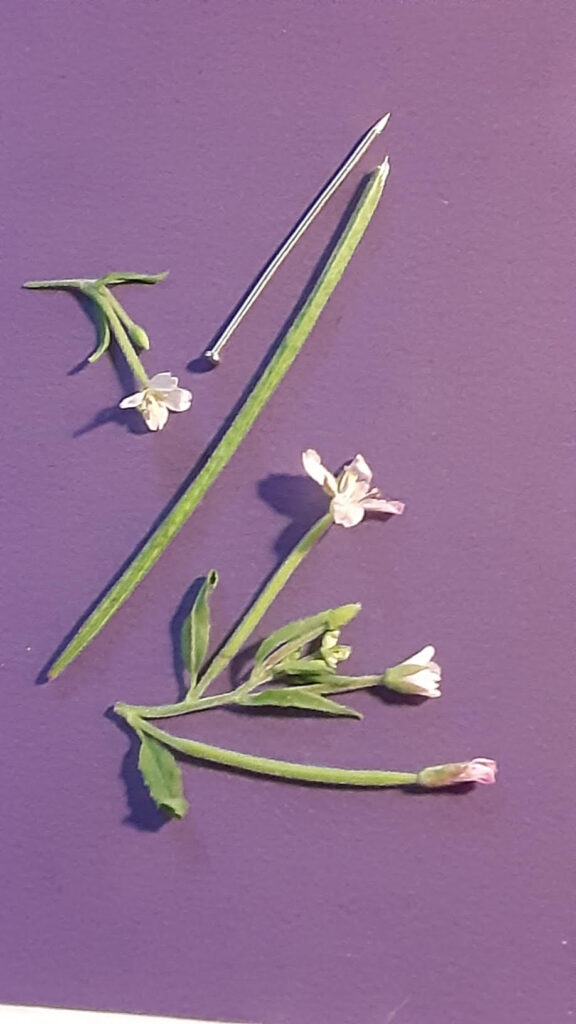By Susan Sprout
Purpleleaf Willowherb is a perennial native plant in the Evening Primrose Family, Onagraceae, that can grow up to four feet tall. I love its scientific name, Epilobium coloratum, which means “colored flower upon a pod” in Greek. Very tiny pink to white flowers appear to be perched atop a long stem, except that the long tube-like stems are actually their ovaries where seeds will develop! This unusual configuration is the main characteristic of willowherbs.

Seven species of them live in Pennsylvania. Their traits are variable from one species to another and sometimes difficult to see. I had to make a second photo trip to check and recheck characteristics I missed the first time, including some with a magnifier: curled hairs in lines on the stems below leaves and on new growth, purple splotches on older leaves growing opposite each other, upper leaves with alternate leaf arrangements.

The flowers of this species of willowherb are only about a quarter to a third of an inch across. Each petal is notched in the middle on its outside edge and has thin colored lines extending out from its center. The flowers attract bees and small flies seeking nectar and pollen. Once pollinated, the thin tube of ovaries will elongate to about three inches as it matures, drying to a brownish color. Splitting open lengthwise, the pod will disgorge tiny seeds, each with tuft of reddish-brown hair to carry it high in the air and off to a nice disturbed area where it can germinate immediately or within two years. Those reddish-brown hairs are responsible for another common name for this plant – Cinnamon Willowherb.

Willowherbs are considered pioneer plants and are close relatives of Fireweed, Epilobium angustifolium. It was one of the first plants to colonize the heavy ash deposits of Mount St. Helens. You see, pioneer species are hardy plants and animals that are the first to colonize barren environments or ecosystems that have been disrupted, like after a fire, or a construction site or road cuttings.
Purpleleaf Willowherbs are native to the eastern part of North America and much of Canada. You may find them in wetter open areas next to swamps and riverbanks and ditches, too. The photos I took were of volunteer plants that showed up growing in a garden at church! There are wetland areas across the street.

